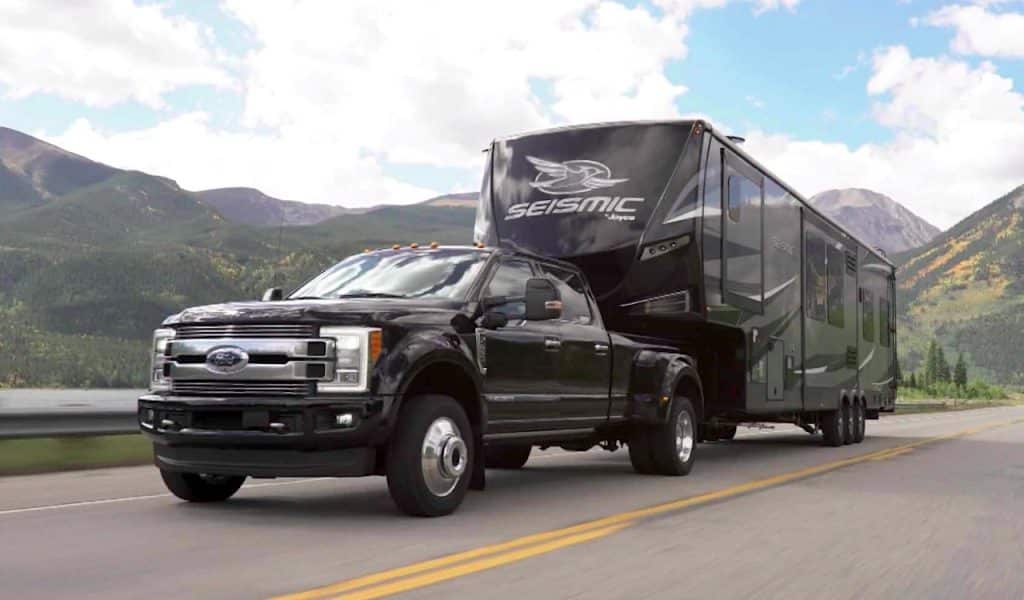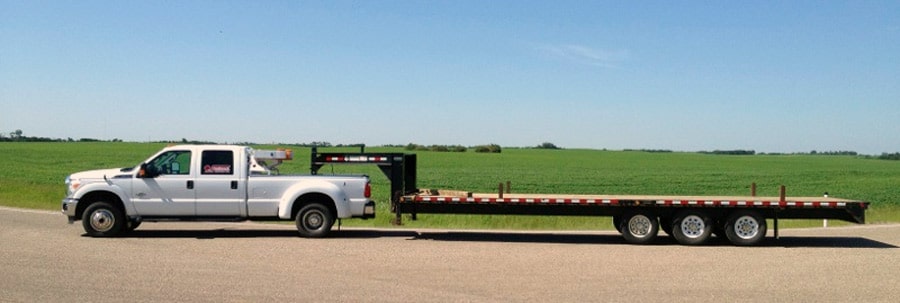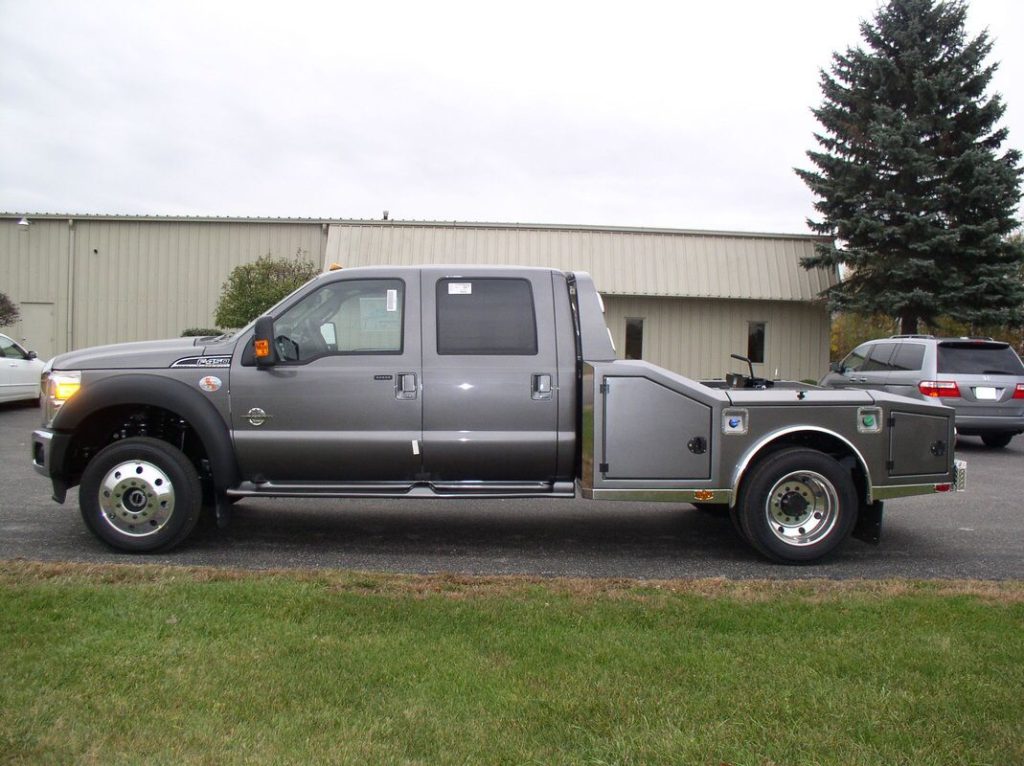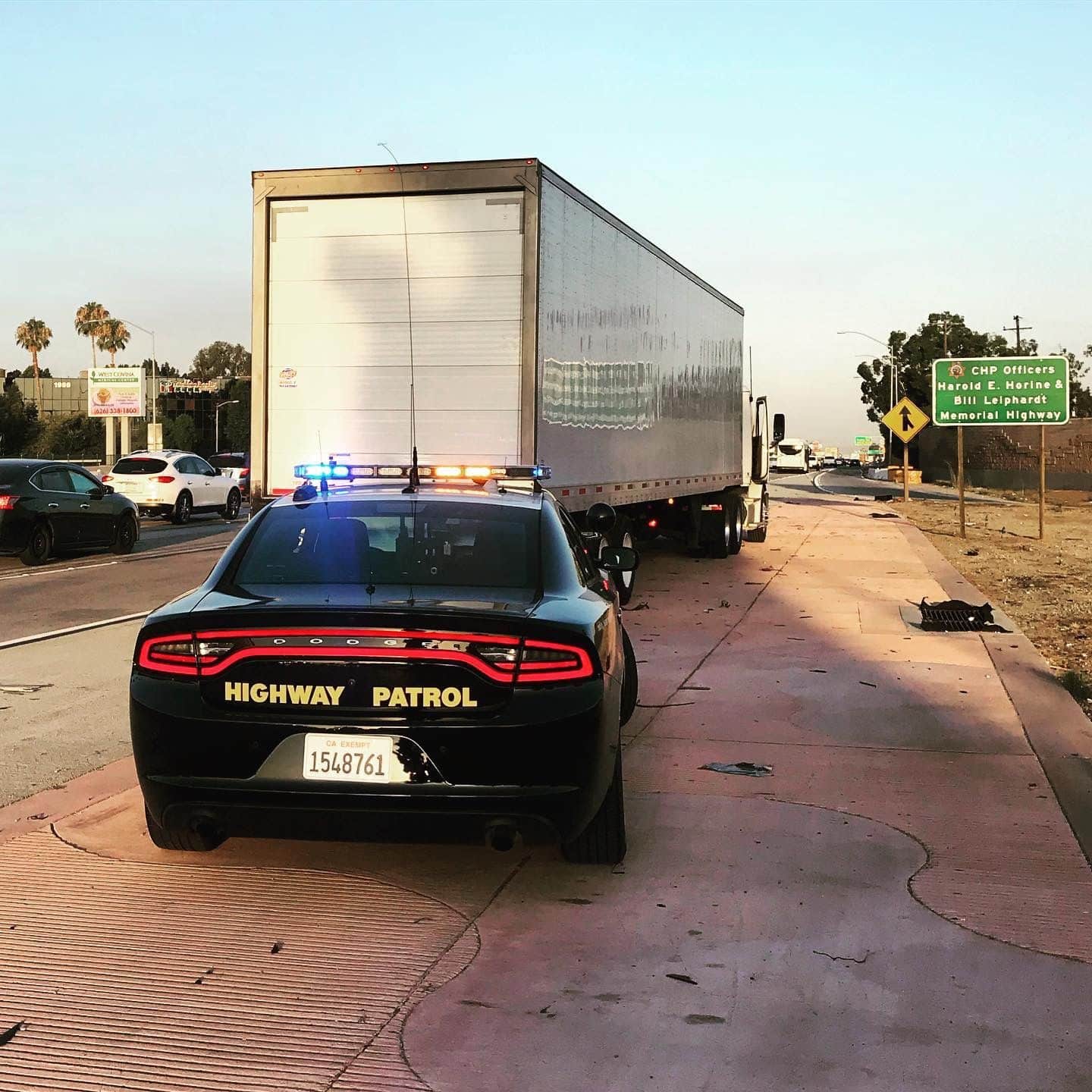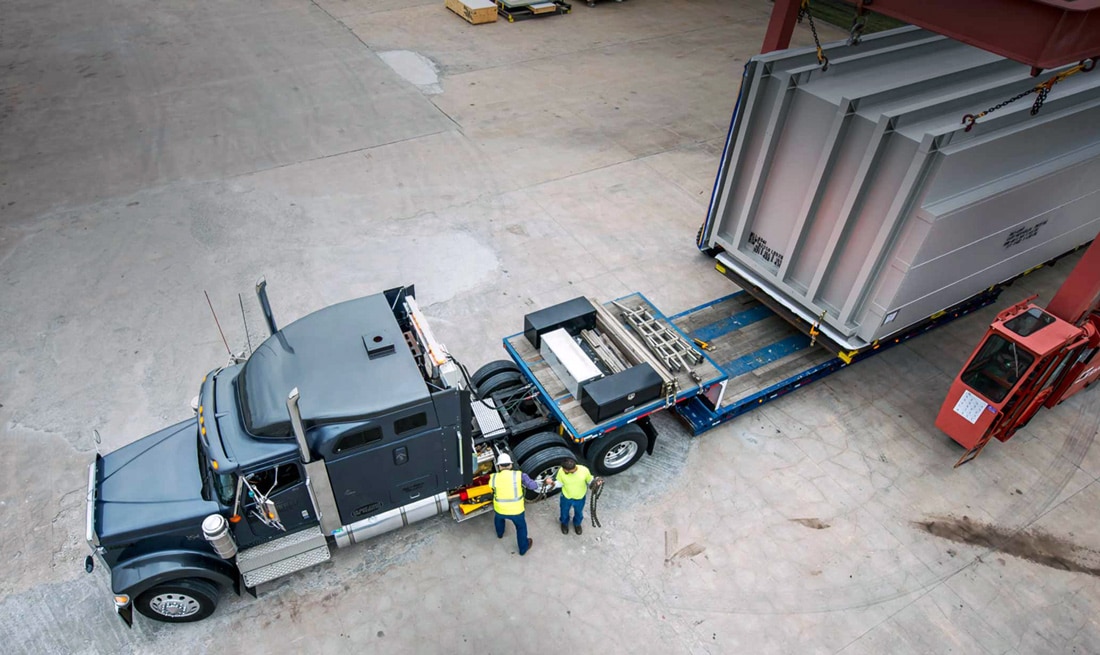If you are an independently-minded driver with a talent for getting freight delivered rapidly and efficiently, you shoulder consider becoming a hot shot trucker.
Hot shot trucking can be the next step in your driving career, or a starting point to launching a career as an owner-operator.
In this 101 guide, we are going to explore everything you need to know about hot shot trucking. We will explain exactly what this job entails, what you could potentially earn, the advantages and disadvantages, and how you can get started as an owner-operator and find your first loads.
What is Hot Shot Trucking?
First of all, you may not be sure what hot shot trucking is. Hot shot truckers haul small loads to their destinations quickly for clients who require a rapid delivery in a pinch.
Unlike a lot of other trucking jobs, working as a hot shot driver does not require you to get a CDL, so long as you are hauling under 10,000 pounds.
Naturally, that makes hot shot trucking a great way to start earning and building up experience while you are working on obtaining your CDL.
Is Hot Shot the Same as Expedited Shipping?
You might be scratching your head and thinking, “Isn’t this just the same thing as expedited shipping?” No, hot shot trucking is not the same as expedited shipping.
What is the difference? A lot of it comes down to the types of vehicles and trailers. Here are the types of vehicles that are commonly used for hot shot trucking:
- Class 3 (14,001-16,000lbs)
- Class 4 (16,001-19,500lbs)
- Class 5 (19,501-26,000lbs)
Later in this post, we will give you recommendations for a few specific makes and models that are suitable for hot shot driving.
Here are the types of trailers that are often used for hot shot trucking:
- Gooseneck trailers
- Bumper pull trailers
- Lowboy trailers
- Deckover trailers
- Dovetail trailers
These are the types of freight you are likely to haul:
- Heavy equipment
- Farm equipment
- Machinery
- Construction materials
Additionally, expedited shipping drivers are frequently on standby, whereas this is not the case for hot shot drivers. As a hot shot driver, you simply check load boards to find jobs. You get to spend less time waiting and more time driving (and earning). That said, deadheading is a common situation for hot shot drivers, but with careful planning, you can usually keep it to a minimum.
How far will you be driving? That can vary considerably from one haul to the next. Some of your jobs might have you making deliveries in your local area. Others might have you driving elsewhere in your state or region. Still others could have you driving all the way from one end of the country to the other.
Who Do Hot Shot Drivers Work For?
The majority of hot shot truckers are owner-operators. That means they work for themselves, and own their own vehicles. They hop on load boards and search for jobs, which they then carry out independently.
There are some hot shot drivers, however, who sign on as company drivers. So, it is up to you what approach you want to take. This post will focus mainly on owner-operator hotshot drivers.
How Much Can You Earn as a Hot Shot Trucker?
Sound good so far? Your next question, no doubt, is what your earnings potential would be if you become a hot shot driver.
The majority of hotshot drivers earn between $49,000 a year and $75,000 a year.
If you become highly successful, however, it is possible to earn more than $100,000 a year in this job.
Numerous factors impact your earnings in this role. These include your experience, what types of loads you haul, how much driving you do, the maintenance and insurance costs for your vehicle(s), your geographical area, the rates you charge, the costs of fuel, and so forth.
Is Becoming a Hot Shot Trucking Worth It?
Hot shot driving can be an amazing career for those who are up to the task of meeting tight schedules. To help you figure out whether hot shot driving might suit you, let’s go over the advantages and drawbacks.
Pros of Hot Shot Trucking
- You can get started rapidly and easily as a hot shot driver, since you do not even need a CDL to begin.
- The cost to insure a semi-truck will likely be less after you have built up some experience with hot shot driving. So, if you are planning to go that direction later, beginning with hot shot trucking can be helpful.
- The costs for the vehicles used for hot shot trucking are generally more affordable than those for semi-trucks. So, startup costs are more manageable. You likely will pay less for fuel and maintenance as well.
- Hot shot driving offers excellent earnings potential.
- Although cross-country hauls do exist for hot shot drivers, regional and local jobs are more common. Some drivers prefer these shorter runs.
- If you decide to become an owner-operator, you get to look forward to all of the benefits that come with working for yourself (you do not have to deal with problematic trucking companies—and we all know there are lots of those out there).
Cons of Hot Shot Trucking
- While there is a lot of demand for hot shot drivers, there are also a lot of people trying to break into trucking by taking these jobs. That means that competition can be fierce.
- Work for hot shot drivers can ebb and flow throughout the year depending on seasonal factors. So, there may be times when you have a hard time filling up your schedule. You need to be ready to jump on a job the instant you see it and immediately get on the road.
- While working as an owner-operator has a lot of advantages, it also has some drawbacks. You will be juggling more in the way of expenses and responsibilities than a company driver. Plus, you may earn less than other owner-operators who drive semis. Still, it is a great way to start working as an owner-operator, and will open up a ton of opportunities for you.
Hot Shot Trucking Requirements
If you are hauling under 10,000 pounds, you do not need a CDL to become a hot shot driver. But you do need to meet the following requirements:
- Obtain a USDOT number.
- Obtain an MC number.
- Take out the relevant insurance policies for your vehicles and cargo.
- Commercially register your vehicles.
- Be ready to track your weights and log your hauls.
Even if you choose to begin without a CDL, it is a good idea to work toward one. That way, you will be able to drive vehicles that require a CDL and haul heavier loads. Your job opportunities will increase considerably as a result.
How to Get Started as a Hot Shot Trucker
Below are the basic steps you need to take to start hot shot driving. We are going to assume that you plan to work as an owner-operator rather than as a company driver, and direct you accordingly.
1. First, get your CDL if you want to do that.
If you want to immediately get your CDL, then you will need to attend truck driving school. Then, pass the skills test to receive your CDL.
In fact, you are in the right place for getting your CDL. Just look under “Training Programs” in the top menu for more information.
Again, if you are planning on hauling under 10,000 pounds, you can skip this step for now and come back to it later if you want to increase your opportunities in trucking.
2. Get your DOT medical certificate.
Something you will need no matter what is a DOT medical certificate from the Department of Transportation.
While you can hypothetically put this step off until later, we suggest you take care of it as early as possible in the process. Why? Because if you cannot get it, that means you cannot do this job. So, it is in your interest to find out sooner than later.
To get this certificate, you must check the FMCSA-approved national registry to find a medical examiner. You will pay a fee for your exam, usually about $120. If you pass the exam, you will get your medical certificate, which will be valid for 24 months. That means every two years, you will have to renew it to keep driving commercially.
3. Buy or lease a vehicle.
You are going to either need to purchase a vehicle, or you will have to lease one. You also will have to get insurance for it.
You are going to end up taking care of these two steps at the same approximate time. In fact, you will probably go in this order:
1. Get a quote for insurance.
2. Buy or lease the vehicle.
3. Insure the vehicle.
The reason you may want to grab a quote before buying or leasing is because it will help you decide whether to buy or lease.
If you do not get a great quote, you are going to find that leasing a company vehicle is generally more affordable than buying and becoming an owner-operator right away.
If that is what you decide to do, you can request a new insurance quote after you start building up a solid commercial driving record. At that point, your rates will likely drop and you may be able to afford to buy and insure your own vehicle.
So, what kind of vehicle should you get for hot shot trucking?
There are a lot of options, but some popular choices include a Ford F450 or F550, a Ram 2500 or 2500 Big Horn, or a Chevy Silverado 2500 or 3500 Heavy Duty.
You will need to consider what types of cargo you want to be able to haul, and choose accordingly.
4. Get an insurance quote (and eventually, insurance).
As we just discussed, you need to insure your vehicle and your freight. Here are some of the types of insurance hot shot truckers need:
- General liability insurance
- Auto liability insurance
- Physical damage insurance
- Cargo insurance
- Personal injury protection (PIP)
- Trailer interchange insurance
- Loading and unloading insurance
- Bobtail coverage insurance
- Towing and storage insurance
- Earned freight insurance
To satisfy FMCSA requirements, you will need at least $750,000 in primary liability insurance. Clients are also going to have basic insurance requirements you need to meet in order to qualify to carry their loads.
That is not a comprehensive list. The exact types of coverages you require will also depend on the types of freight you are hauling as well as other individual factors. So, you will need to do some research to make sure you are getting the right protection for your business.
Maintaining a good driving record is essential to keeping your rates as low as possible, so always drive as carefully as you can.
Call multiple companies for quotes as well. Since there are differences in underwriting guidelines and discounts between commercial auto insurance carriers, you may sometimes find a deal just by doing the extra legwork to call around.
5. Register your business and get your EIN, MC number and DOT number.
Your next order of business is to take care of registration and get the numbers you need to operate.
A lot of owner-operators register their businesses as LLCs. This business structure is ideal because it allows you to separate yourself as a personal entity from your business entity. If something goes wrong, it is your business entity that will incur debts and expenses, rather than you as an individual.
It is faster and easier than you think to set up an LLC. Check out our detailed guide to registering a trucking business LLC.
After you register your business, apply for your employer identification number (EIN). You will need this for your taxes.
Next, you need to apply for your Department of Transportation (DOT) number and your Motor Carrier (MC) number. These will allow you to operate under your own authority as an owner-operator.
Remember, you can bypass some of these steps and start out as a company driver if you just want to get on the road and start earning as soon as possible, and circle back around to them later.
How to Find Hot Shot Trucking Loads
Once you have taken care of everything above, you are going to want to get to work right away. Where can you find hot shot trucking jobs?
The simplest and most direct answer is to check load boards.
Here are several major load boards that can get you off to a great start:
- DAT Trucker’s Edge
- Hotshot Carrier
- 123 Loadboard
- Get Loaded
- Fr8star
- TRULOS Transportation
Do not be deterred by the subscription fees you have to pay to have access to many load boards. They pay for themselves in no time.
Since time is of the essence when it comes to competing for loads, you are going to want to set alerts on load boards that offer that feature. That way, if a job that matches your needs is posted, you will know about it right away. You can then log on and see if you can claim it before someone else does.
Be sure to examine the full details for each job carefully. Pay close attention to the information on the brokers so you can pick companies to work with that are going to pay you quickly and reliably for your services.
Over time, hot shot haulers who do a great job build up their reputations. You will develop strong relationships with some brokers, and over time, they may start contacting you directly about jobs in your area.
You also may be able to locate hot shot trucking jobs via networking. So, reach out through others you know in the industry to see what you can find.
It can take time to get the hang of finding the highest-paying jobs, so try and be patient when you are new to hot shot driving. A good shortcut starting out is to take jobs on weekends.
Launch Your Career Now
You now know the basics steps to becoming a hot shot driver, and you know what you can earn, the benefit of working in this role, and how you can start finding your first loads.

